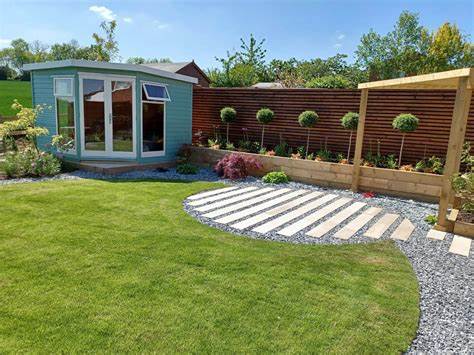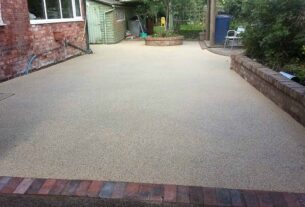With increasing awareness of climate change and environmental impact, more homeowners are turning to sustainable landscaping to create eco-friendly and low-maintenance gardens. Sustainable landscaping involves designing and maintaining gardens in a way that reduces water consumption, supports local wildlife, and uses natural materials and methods to enhance the environment. By choosing sustainable landscaping solutions, you can create a beautiful garden that benefits both your home and the planet.
For homeowners in Leamington Spa, sustainable landscaping leamington spa is especially appealing, given the region’s commitment to preserving green spaces and supporting biodiversity. In this article, we’ll explore practical sustainable landscaping solutions to help you create an eco-friendly garden in Leamington Spa.
- Choose Native Plants for Low-Maintenance Gardens
Native plants are key to sustainable landscaping. These plants have adapted to the local climate and soil conditions, requiring less water, fertilizers, and pesticides. They also provide a habitat for local wildlife, such as birds, bees, and butterflies, enhancing biodiversity in your garden.
Benefits of Native Plants:
- Require less water and maintenance.
- Resist local pests and diseases.
- Support local wildlife, including pollinators.
- Help preserve the natural ecosystem of Leamington Spa.
Incorporating plants like Primula vulgaris (common primrose) and Lavandula angustifolia (English lavender) can bring beauty to your garden while keeping it eco-friendly.
- Install a Rainwater Harvesting System
Water conservation is a major component of sustainable landscaping. In Leamington Spa, where rainy periods alternate with drier months, installing a rainwater harvesting system is an effective way to reduce water consumption. These systems capture rainwater from rooftops and store it for later use, helping to irrigate your garden without relying on mains water.
Benefits of Rainwater Harvesting:
- Reduces dependency on treated water supplies.
- Lowers water bills.
- Provides a natural, chemical-free source of water for your plants.
- Helps prevent water runoff and erosion.
Simple rain barrels can be placed under gutter downspouts, or you can invest in more advanced systems that integrate into your garden’s irrigation network.
- Compost for Healthier Soil
Composting is an excellent way to reduce garden waste and create nutrient-rich soil that promotes plant growth. By composting kitchen scraps, garden clippings, and leaves, you can produce organic matter that improves soil structure, retains moisture, and provides natural fertilizers for your plants.
Benefits of Composting:
- Reduces the need for chemical fertilizers.
- Enriches soil with essential nutrients.
- Helps retain soil moisture, reducing the need for watering.
- Lowers the amount of organic waste sent to landfills.
Setting up a compost bin in your garden is a simple and effective way to contribute to a more sustainable gardening routine.
- Incorporate Permeable Paving
Permeable paving solutions allow water to filter through the surface, reducing runoff and promoting natural drainage. This is especially important in urban areas like Leamington Spa, where traditional hardscaping, such as concrete and asphalt, can prevent water from soaking into the ground, leading to flooding and erosion.
Permeable Paving Options:
- Gravel or stone pathways.
- Porous concrete or asphalt driveways.
- Paving stones with gaps for water to drain between them.
- Grass pavers or grid systems that allow grass to grow through them.
Incorporating permeable paving helps control water flow and encourages rainwater to seep into the soil, supporting a healthy garden ecosystem.
- Create a Pollinator-Friendly Garden
Pollinators, such as bees, butterflies, and birds, play a critical role in maintaining the health of our ecosystems by helping plants reproduce. To encourage pollinators to visit your garden, plant a variety of flowering plants that bloom at different times throughout the year. Avoid using chemical pesticides and herbicides, as these can harm pollinators.
Pollinator-Friendly Plant Ideas:
- Lavandula (lavender) for bees and butterflies.
- Digitalis purpurea (foxglove) for bees and hummingbirds.
- Verbena bonariensis for butterflies.
- Wildflowers like Achillea millefolium (yarrow) and Primula veris (cowslip).
Providing nectar-rich plants and safe habitats for pollinators will enhance the biodiversity and beauty of your garden.
- Opt for Drought-Tolerant Plants
Choosing drought-tolerant plants is a smart way to reduce water usage while maintaining a lush and attractive garden. These plants are capable of thriving in dry conditions, making them perfect for times of low rainfall in Leamington Spa. Succulents, ornamental grasses, and Mediterranean plants are excellent choices for a sustainable, water-wise garden.
Drought-Tolerant Plant Suggestions:
- Sedum (stonecrop) and Sempervivum (houseleeks) for rock gardens.
- Phormium tenax (New Zealand flax) for striking foliage.
- Eryngium (sea holly) for both visual appeal and durability.
- Lavandula (lavender) and Salvia (sage) for long-lasting blooms and minimal water needs.
These plants require less irrigation, helping you maintain a healthy garden with lower water usage.
- Mulch for Moisture Retention
Mulching is an essential practice in sustainable landscaping. By applying a layer of organic material, such as wood chips, straw, or compost, to your garden beds, you can help retain moisture, suppress weeds, and regulate soil temperature. Mulching also adds organic matter to the soil as it decomposes, promoting healthy plant growth.
Benefits of Mulching:
- Reduces the need for watering by retaining soil moisture.
- Prevents weed growth, reducing the need for chemical herbicides.
- Helps protect plant roots during hot and cold weather.
- Adds organic material to the soil, improving its fertility.
Mulching is an eco-friendly way to improve the overall health of your garden while reducing water and maintenance requirements.
- Build a Wildlife Habitat
A sustainable garden should support local wildlife, providing shelter and food for birds, insects, and other creatures. By creating designated wildlife habitats, you can invite beneficial animals into your garden, helping with natural pest control and promoting a healthy ecosystem.
Ideas for Wildlife Habitats:
- Install bird feeders, birdbaths, and nesting boxes to attract birds.
- Create a small pond or water feature for amphibians and insects.
- Leave a corner of your garden undisturbed with logs, leaves, and rocks for insects and small animals.
- Plant a hedgerow with native shrubs and trees to provide shelter and food for wildlife.
These wildlife-friendly features will bring life to your garden and contribute to its sustainability.
- Use Solar-Powered Garden Lighting
For lighting pathways, patios, or garden features, solar-powered lights are a great sustainable option. These lights are powered by the sun, eliminating the need for electricity and reducing your garden’s carbon footprint. Solar garden lights are available in a variety of designs, from string lights to spotlights, and can enhance the ambiance of your garden without increasing energy consumption.
Benefits of Solar-Powered Lighting:
- Energy-efficient and eco-friendly.
- Easy to install with no wiring required.
- Cost-effective in the long run as they don’t increase electricity bills.
- Available in a variety of styles to suit any garden aesthetic.
Solar lighting adds both functionality and atmosphere to your outdoor space, all while keeping your garden energy-efficient.
- Reduce Lawn Size or Switch to a Low-Maintenance Lawn
Traditional grass lawns require significant amounts of water, fertilizers, and maintenance to stay lush and green. To create a more sustainable garden, consider reducing the size of your lawn or replacing it with low-maintenance alternatives. You can swap out grass for drought-tolerant ground covers, wildflower meadows, or decorative gravel and paving.
Alternatives to Traditional Lawns:
- Thymus serpyllum (creeping thyme) or Phlox subulata (moss phlox) as ground covers.
- Ornamental grasses like Festuca (fescue) for texture and interest.
- Wildflower meadows that require less mowing and support pollinators.
- Decorative gravel or paving stones for seating and dining areas.
These low-maintenance options are both eco-friendly and visually appealing, offering an alternative to resource-heavy lawns.
Conclusion
Sustainable landscaping not only benefits the environment but also provides homeowners in Leamington Spa with beautiful, low-maintenance gardens that thrive with minimal intervention. By incorporating native plants, water conservation techniques, and eco-friendly practices, you can create a garden that supports local wildlife, conserves resources, and enhances the natural beauty of your property.


